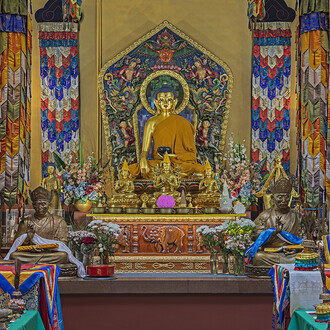The exhibition features the cultural artefacts of the peoples inhabiting the territory of Mesopotamia (in the valleys of the Tigris and Euphrates), Iran, Asia Minor, Syria and the Mediterranean region between 4,000 and 1,000 B.C. Among those population groups were the Sumerians, Akkadians, Babylonians, Assyrians, Elamites, Persians, Hittites, Hurrians, Phoenicians and others.
The exhibition features the cultural artefacts of the peoples inhabiting the territory of Mesopotamia (in the valleys of the Тigris and Euphrates), Iran, Asia Minor, Syria and the Mediterranean region between 4,000 and 1,000 B.C. Among those population groups were the Sumerians, Akkadians, Babylonians, Assyrians, Elamites, Persians, Hittites, Hurrians, Phoenicians and others. The objects on display include ceramic vessels from Susa, Elam (4th millennium B.C.), cuneiform documents in Sumerian and Akkadian languages. The exhibition contains stone reliefs from the residences of the Assyrian rulers Ashurnasirpal II (9th century B.C.) and Tiglath-Pileser III (mid-8th century B.C.) in Kalhu, Sargon II (late 8th century B.C.) in Dur-Sharrukin and Sinakherib (7th century B.C.) in Ninevia.
Objects from Palmyra, a large trading centre which existed in the Syrian Desert in the early centuries A.D., include the funeral steles with the portrait reliefs of the deceased and the “Palmyrian Tariff” (137 A.D.) carved out of a limestone slab.
















